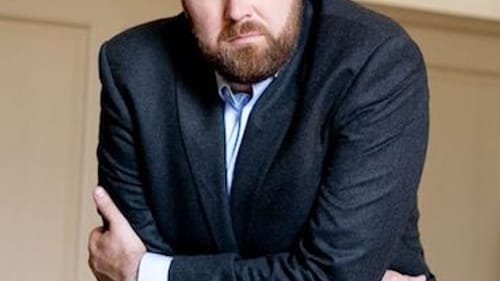Stay in the Loop
BSR publishes on a weekly schedule, with an email newsletter every Wednesday and Thursday morning. There’s no paywall, and subscribing is always free.
Challenging and beautiful
Philadelphia Orchestra presents Haydn's 'The Seasons'

I’m certain that after the Philadelphia Orchestra’s concert last weekend, many listeners left Verizon Hall with a new regard for composer Joseph “Papa” Haydn. Often viewed as the “also-ran” of the classical era, not spritely and precocious like his friend Mozart nor a bombastic rule-breaker like his exasperating student Beethoven, Haydn walked the middle path throughout his long life (1732 to 1809).
During that time, he brought us the modern symphony (all 104 of them), oratorios, operas (though seldom performed today), and chamber works. Admired for his musical wit and inventiveness no less than his personal charm, Haydn was and remains a solid stalwart of the classical repertoire.
"Old, new, borrowed, blue"
Or so the myth would have it. Although not exactly an unknown work, his 1801 oratorio, The Seasons, tells a different tale. Here is a Haydn of vast resources, with a towering vision of life and art. Its 42 movements lasted more than two and a half hours in this first complete performance by the orchestra. Conductor Yannick Nézet-Séguin was joined by three soloists: Regula Mühlemann, soprano (Hanne); Werner Güra, tenor (Lukas); and Matthew Rose, bass (Simon). The performance also included 80 members of the Philadelphia Symphonic Choir, under Joe Miller’s direction.
There is challenging and beautiful music throughout the four sections named for the seasons they celebrate, some of which, like a bride’s accessories, are old, new, borrowed, and even blue (in the melancholy sense). Haydn borrows from his own “Surprise” Symphony for a farmer’s tune in the “Spring” section.
Lovers of Beethoven may be surprised to find the roots of the sixth symphony’s storm scene in The Seasons. It’s all there in the “Summer” section: the drum’s distant thunder, pizzicato first raindrops, the frenzy of the storm itself, and gradual parting of the clouds. There are even a quail’s call and other animal sounds, foreshadowing the trio of birds in the Beethoven, which dates from 1808.
Haydn via the Clancy Brothers
The Seasons sweeps inexorably from an arresting introduction by the large (by Classical standards) orchestra through seasonal activities such as the harvest, hunt, and sheltering in place through icy winter months. Has the sound of a spinning wheel been heard in music before this work? Schubert and Saint-Saëns accomplished this sometime later.
The work balances arias, ensembles, choruses, and purely instrumental music throughout, so the effect is always fresh and appealing in a work of this length and grandeur. There is also humor, including the infamous croaking frogs that Haydn complained about so strenuously when he saw the libretto by Baron van Swieten (the imperial librarian in Vienna) .

The work is loosely based on a poem by James Thomson, an Englishman, though the orchestra’s performance was in German with English captions. The audience particularly enjoyed a ballad about a feisty country maiden who escapes a lecherous lord by stealing his horse. I can just imagine the Clancy Brothers and Tommy Makem singing this song.
Because it is a secular oratorio, the three soloists needed not be concerned about ecclesiastical proprieties, and could express more personal conviction and insight. Regula Mühlemann sang radiantly, goddesslike in a long green skirt and off-the-shoulder black top, a garland of red flowers in her hair. Her voice’s clarity and brilliance gave the text wings and blended eagerly with her co-soloists and chorus. Werner Güra lent conviction and personality to the part of Lukas; his voice is very listenable, not forcing or imposing attitude on the music. Matthew Rose’s bass was nimble and rich, comfortably changing registers and articulating melismata without making them sound like baroque cantatas.
The Philadelphia Symphonic Choir under Joe Miller provided just the right mix of musicianship and enthusiasm in music that at times frolics and plays, at others stirs with profound longing. The last grand chorus, thanking heaven for the blessings of each season, is as close to the heights of perfection as music of this or any other time can reach.
Leading it all, and shaping it with affection, sincerity, and joy was Nézet-Séguin, conveyed phenomenal energy in a work I suspect many thought would be tame, dry, and predictable. Will works of this variety, complexity, and scope be performed less frequently as time goes by and budgets and audience patience shrink? I hope not. A work of great beauty that celebrates the environment and our participation in it, and that expresses heartfelt thanksgiving in the most ecumenical voice, has a message for all in our century and beyond.
What, When, Where
The Seasons. By Joseph Haydn. Soloists: Regula Mühlemann, soprano; Werner Güra, tenor; Matthew Rose, bass; Yannick Nézet-Séguin, conductor. Philadelphia Symphonic Choir directed by Joe Miller. The Philadelphia Orchestra. November 16-18, 2017, at the Kimmel Center's Verizon Hall, 300 S. Broad Street, Philadelphia. (215) 893-1900 or philorch.org.
Sign up for our newsletter
All of the week's new articles, all in one place. Sign up for the free weekly BSR newsletters, and don't miss a conversation.
 Linda Holt
Linda Holt